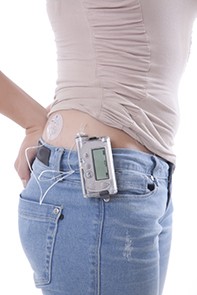A case of hyperglycaemia in a young woman using an insulin pump
Clare, aged 26 years, presents to your medical centre on Sunday morning at 9am reporting high blood glucose levels (BGLs) since waking at 6am. She has had type 1 diabetes since the age of 17 years.
Clare currently uses an insulin pump. She transitioned from multiple daily injections (MDI) of insulin six months ago when she started planning pregnancy. This was under the care of her usual endocrinologist at the local hospital’s diabetes centre. Clare does not have any known complications of diabetes nor associated autoimmune disease.
Apart from mild lethargy and thirst, Clare does not appear distressed or unwell. She denies any chest pain, infection, or concurrent illness. On examination, she is afebrile and her blood pressure and pulse are in the normal range. Her cardiovascular, respiratory and abdominal examination results are normal.
Clare is concerned because her glucose levels have not been this high since she started using the pump. She has been unable to contact her usual diabetes care team after hours.
Picture credit: © Hilleborg/Dollar Photo Club.

